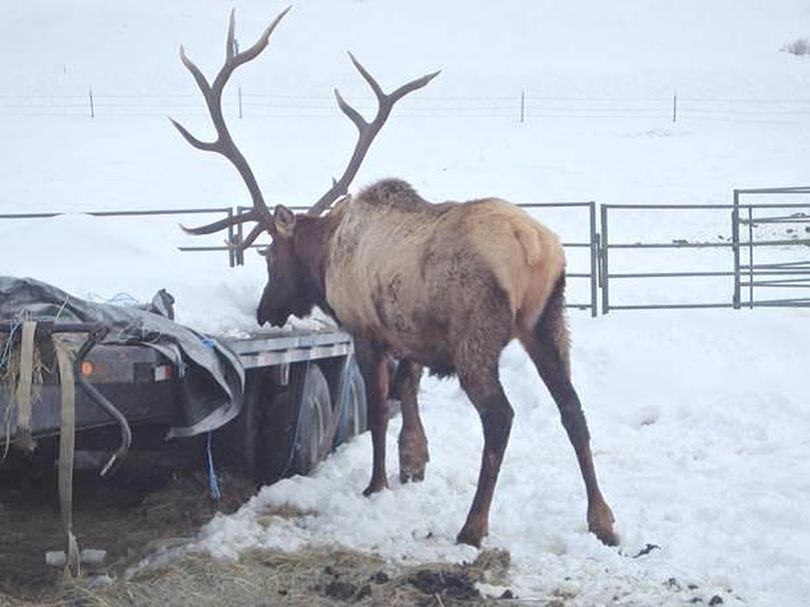Legislators would make really, really bad wildlife managers

WILDLIFE -- A Washington lawmaker said he's trying to make a point with pointless legislation that would allow Western Washington hunters to shoot bull elk that show signs of a limp.
Really.
Sen. Kirk Pearson, R-Monroe says he introduced SB 5474 to prompt the Washington Department of Fish and Wildlife do more to solve the mystery of the untreatable hoof disease that's plaguing West Side elk.
“I’m doing this to make the department take this issue a little more seriously,” the chair of the Natural Resources and Parks Committee said at a hearing this week.
Anis Aoude, the department's Game Division Manager, warned the committee that the measure would lead to a “substantial” reduction of the state’s elk herds.
Mark Smith, owner of Eco Park Resort in Cowlitz County, was even more direct when he got his chance at the microphone during the public comment period:
“I guarantee every large bull elk in Washington will develop a limp....”
Duh.
Following is a full report on the committee hearing by Allen Thomas of the The Vancouver Columbian:
Legislation to prod the Washington Department of Fish and Wildlife to do more to combat elk hoof disease has received a mostly favorable response before the state Senate Natural Resources and Parks Committee.
But the provision in Senate Bill 5474 that would allow landowners, hunting license holders and tribal members to euthanize limping elk got blasted at a public hearing in Olympia on Tuesday.
“I guarantee you every large bull elk in the state of Washington will suddenly develop a limp and will be shot year-round and it will have a major effect on our elk herds,’’ testified Mark Smith, owner of Eco Park Resort on the upper Toutle River in Cowlitz County.
Bruce Barnes of Vancouver, founder of Mount St. Helens Rescue, agreed.
“I oppose this bill because I really do believe people are dishonest in the woods,’’ Barnes said. “I think you are going to run into a major law enforcement nightmare.’’
Anis Aoude, game division manager for the Department of Fish and Wildlife, said not all elk with a limp have hoof disease.
“All they have to say is ‘We killed this elk. We thought it was limping,’’’ Aoude said.
Sen. Kirk Pearson, R-Monroe, sponsor of the bill, said it is not his intention to initiate a free-for-all.
“Bills can be worked on,’’ Pearson said.
The measure also would:
• Require Department of Fish and Wildlife staff in possession of a firearm to euthanize an elk exhibiting a severe limp if located in an area where hoof disease is present.
• Prohibit anyone, including the Department of Fish and Wildlife, from moving a live elk from an area affected by hoof disease to any other location.
• Require the department to meet at least quarterly with its elk hoof disease public working group.
Observations of elk with deformed, broken, or missing hooves have increased dramatically in Southwest Washington in the past decade.
The Cowlitz River valley is the epicenter of observations of ailing elk, but sightings also have been reported by the public in the Willapa Hills, Mount St. Helens, south Olympic Peninsula and in the Skagit River valley, plus northern Oregon.
Tests conducted by scientists in the United States and abroad show these abnormalities are strongly associated with treponeme bacteria, known to cause digital dermatitis in cattle, sheep and goats.
All who testified Tuesday said the Department of Fish and Wildlife needs to be more pro-active on hoof disease.
Smith is a member of the department’s Elk Hoof Disease Public Working Group. The agency did not take the suggestions of the group seriously, he added.
“It’s a dysfunctional committee that hasn’t met for two years,’’ he said.
Barnes told the lawmakers they partially are to blame for doing too little about elk hoof disease.
“The elk are an iconic animal in our state,’’ he said. “They are a revenue collector — not only for fish and wildlife (department), but for businesses that thrive on hunters…We owe these animals something better than what we’ve got going here.’’
Pearson noted his committee has had numerous work sessions on the topic in recent years.
“I believe this is a very serious issue or I wouldn’t keep bringing it back in front of this committee,’’ he said.
The committee did not vote on the bill.
